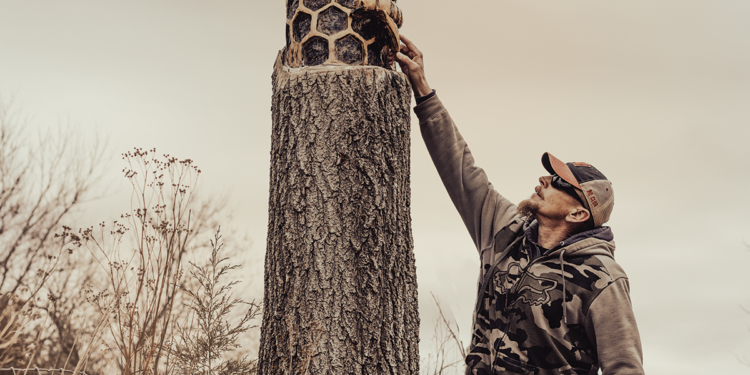Well before he took up the art of wood carving, Joe Krings was good with his hands.
A welder by trade, he returned to school to earn a degree in computer animation and studio art, paying his way by working construction, learning framing, dry wall, and concrete. All those skills, he said, have served him well in his new career as a creator.
After graduating from the University of Nebraska at Omaha, he returned home to Lindsay, Nebraska, and started a family. With his wife working, he took up the role of stay-at-home dad.
It was in the spare two to three hours during the day with his newborn that Krings took up the hobby that would become his career. It started out as a creative outlet—scratching and gluing some pieces here, carving some works for friends and family there—and eventually, became his business, Krings Karvings.
Six years on from first putting his carving skills to work, Krings can’t imagine doing anything else.
“It’s become my thing. It’s my passion,” he said. “I can’t really think of anything else. It’s a challenge to see what I can pull off.”
In the home he built not far from where he grew up in Lindsay, Nebraska, Krings turns raw hunks of cedar and spruce into works of art. Custom, handmade carvings with tools as varied as the tiniest awl to a chainsaw and blow torch. He guesses he’s made more than 300 pieces. Animals, mailboxes and tree art, wooden figures, toys, statues, and everything in between. He’s sold more than 250 works. But he admits, he prefers the pieces that aren’t run-of-the-mill, are more pop-culture inspired, and maybe don’t fly off the shelves.
“I can carve bears and eagles and owls all day because people love them,” said Krings, 45. “That’s what they want in their house. But I like carving ’80s characters—Predator, Robocop, Star Wars things…things that interest me. I don’t always have a lot of time to do that because there aren’t a lot of customers for that out here, so I have to pay the bills. A lot of times it’s whatever sells is kind of what I’m doing.”
Krings cuts, carves, sands, burns, stains, and varnishes each piece meticulously by hand. The soft wood species—pine, fir, and spruce—tend to be the easiest to carve but don’t have the staying power of the hardwoods, which are tougher to carve and punishing on tools.
Krings prefers red cedar, black walnut, and spruce. It’s the challenge, and just how fickle wood can be, that Krings loves.
“There are 100,000 people out there carving, and I try not to look at their stuff […] I try to always do something original or put a spin on it in my way, shape, or form.”
From concept to carve, Krings will sometimes sketch out his design or watch videos, studying the subject for weeks.
“If I’m doing a mule, I’ll eat, sleep, and drink mules until the day I start carving. I’ll do reference drawings just for my own thoughts to keep myself on track. As far as planning out all these proportions, I usually just go by the seat of my pants.”
The largest piece he’s carved is a 7-foot standing black bear. Carved from a solid, 700-pound elm, it took more than 40 hours of work. The most intricate of his recent works includes a Hereford bull and buffalo carved from spruce.
Cuts and gouges on his hands and massive logs toppling, threatening to crush him, aren’t uncommon. He said he’s made many mistakes and finds he learns more about the process the more he makes.
His long-term goal is a website plying his wares or maybe even a small storefront in Lindsay down the road. He’s always on the lookout for larger-scale commissions, perhaps for zoos or habitats.
“I’d love to do these huge carvings and just be contracted and busy with this kind of work until I can’t do it anymore,” he said.
This article originally appeared in the May 2023 issue of Omaha Home magazine. To receive the magazine, click here to subscribe.


Photo by Bill Sitzmann.











